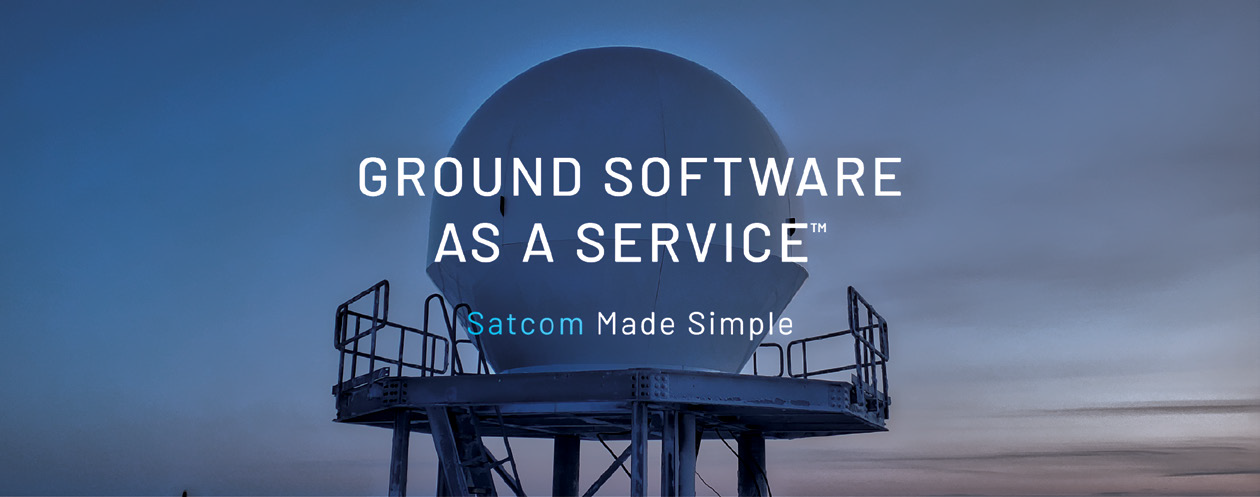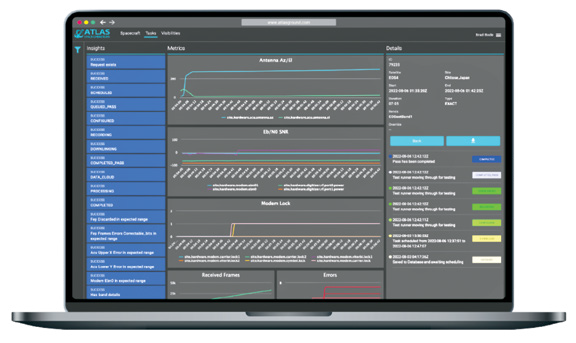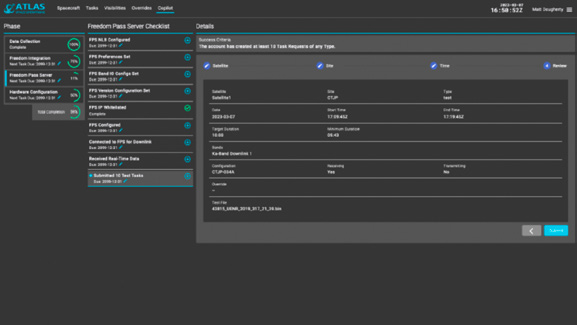Grounded In Software
Today, it’s common for space communication providers in the ground segment to refer to themselves as ground station as a service (GSaaS) providers. This means one of two things:
1. Satellite operators deploy hardware at a ground site and get a radio frequency (RF) data feed
2. Satellite operators receive a data feed after the processing has been done through the front-end processor (FEP) or modem.

In both cases, the satellite operator is responsible for backing up and receiving their data, as well as the outlay of hardware at each ground site. This results in a resource crunch of both time and money for operators.
Every ground station provider has a slightly different method of providing access to space. ATLAS Space Operations’ signature in the industry is its global federated network — a network of networks.
By abstracting hardware differences away from the ground-to-satellite communications channel, ATLAS creates a translational layer in the cloud and orchestrates disparate network connections.
The execution of a software-forward approach within the satcom ground segment has allowed ATLAS to position itself as a Ground Software as a Service™ (GSaaS) provider, meaning the company offers a global network of antennas as well as industry-leading, software capabilities.
One of the key benefits of working with ATLAS is risk mitigation. Freedom™ (ATLAS’ proprietary software platform) offers a secure, single API, or universal pathway, to access all ground stations in its federated network, whether the station is ATLAS-owned or an ATLAS Partner, such as AWS or Viasat.
Additionally, anytime a new partner ground station is integrated into the ATLAS network, all clients will gain access to an expanding federated network.
What makes ATLAS’ offering unique is that there is no new hardware deployment at the antenna site and the API and data streams remain the same.
This means that no matter the ground site an operator chooses to use — whether it’s ATLAS or a third party — data interfaces remain identical.

One way clients can benefit from Freedom is the ability to quickly visualize mission performance through an exceptional user interface (UI).Task Insights is a feature that leverages Freedom’s metric reporting system to examine every detail of the satellite link from the antenna to the baseband to the cloud connection.
Operators can understand how their pass performed in near-real time, and make any necessary changes for future passes. Clients can also benefit from Freedom’s FreeTime API, which shows the percentage of overlap with conflicting visibilities across the entire network. The Freedom UI allows operators to easily identify opportunities and make the most efficient use of the network.
Most importantly, working with ATLAS’ Ground Software as a Service offering reduces spacecraft operators’ time frame to launch. Freedom offers clients a step-by-step, phased onboarding process called Copilot. This feature is a digital checklist of everything a client needs to do to integrate with Freedom.

Additionally, ATLAS has a fully-featured test environment within Freedom that automatically updates when an operator goes through satellite integration.
By building a global federated antenna network powered by Freedom, ATLAS Space Operations has created a flexible and resilient solution that meets the needs of nearly all the demands across DoD, civil, and commercial missions.

Small satellite operators benefit from Freedom’s scalability and affordability, while large operators leverage the federated network to access a massive global footprint that includes 44 antennas.
By embracing hardware challenges with software solutions, ATLAS is driving innovation in the ground segment and growth in the satellite industry to accomplish the broader mission of connecting humanity through space.
atlasground.com




